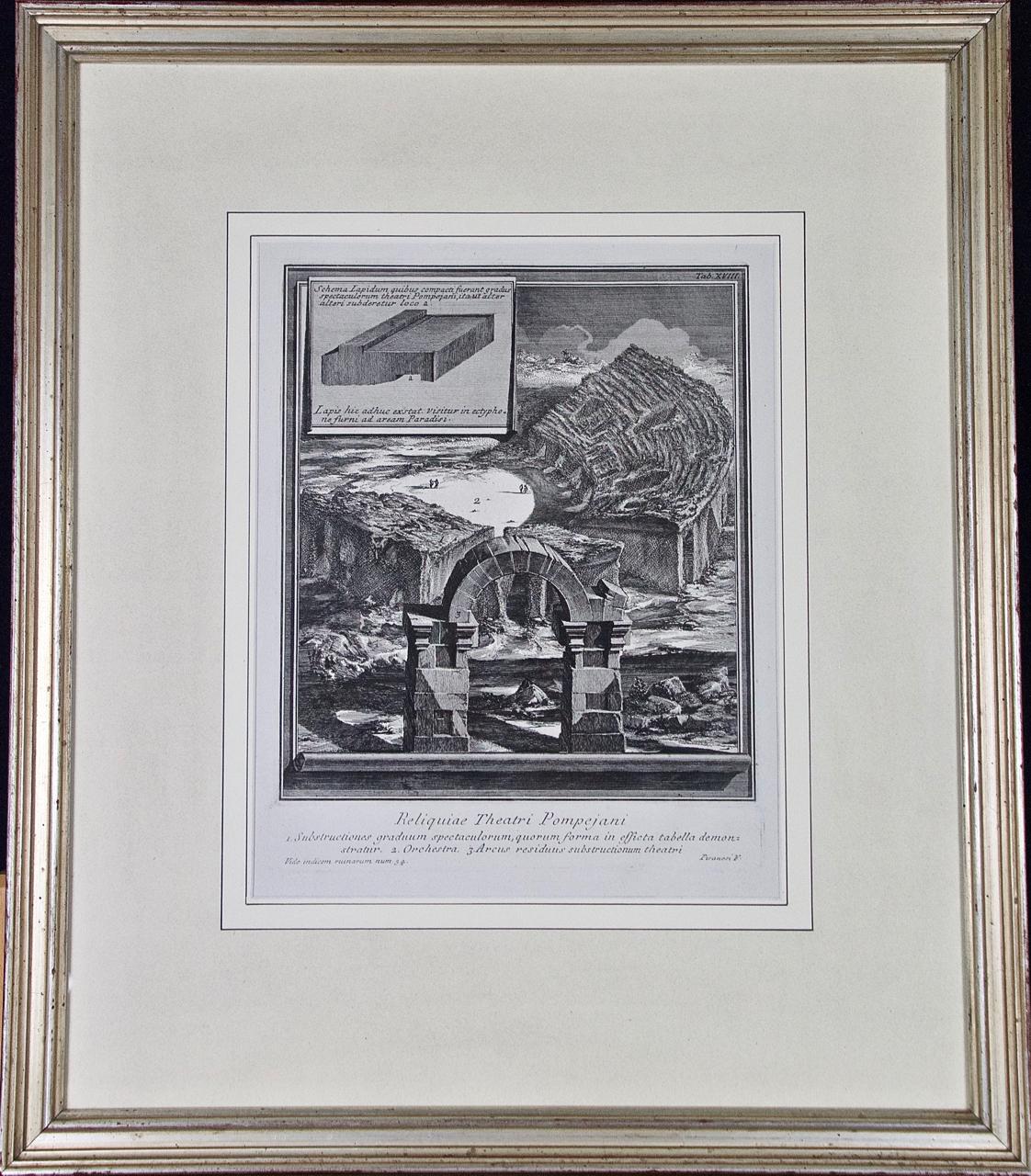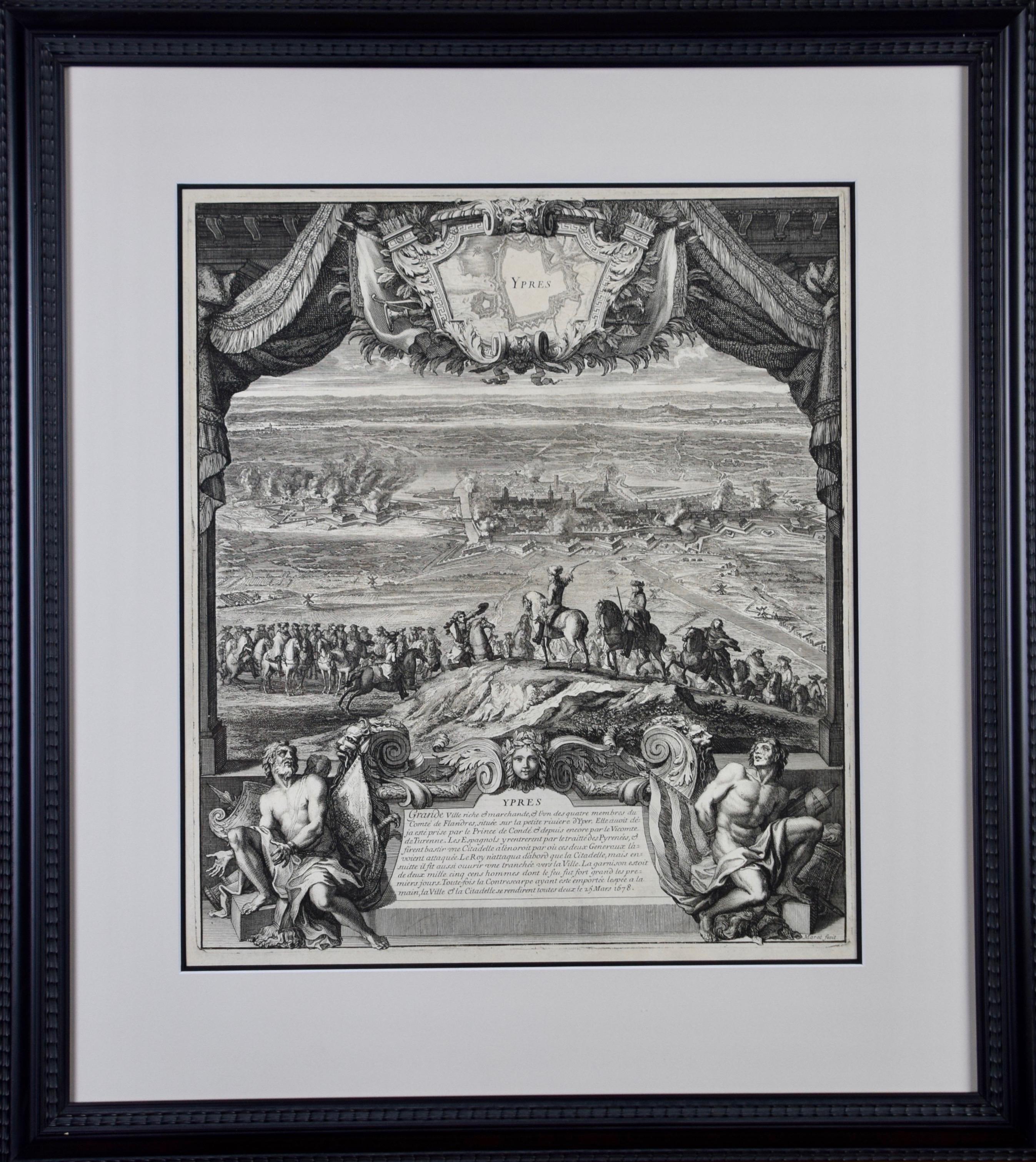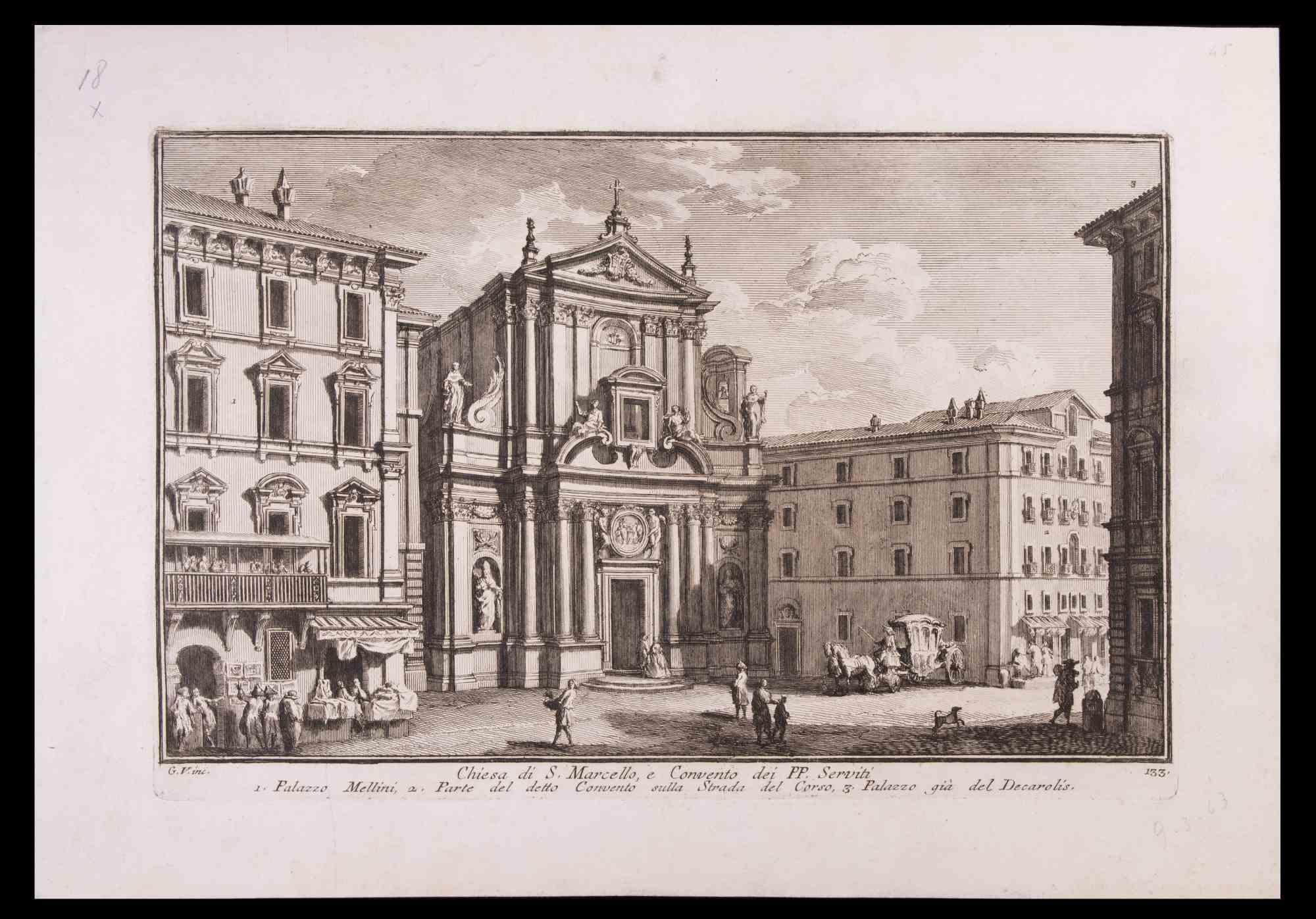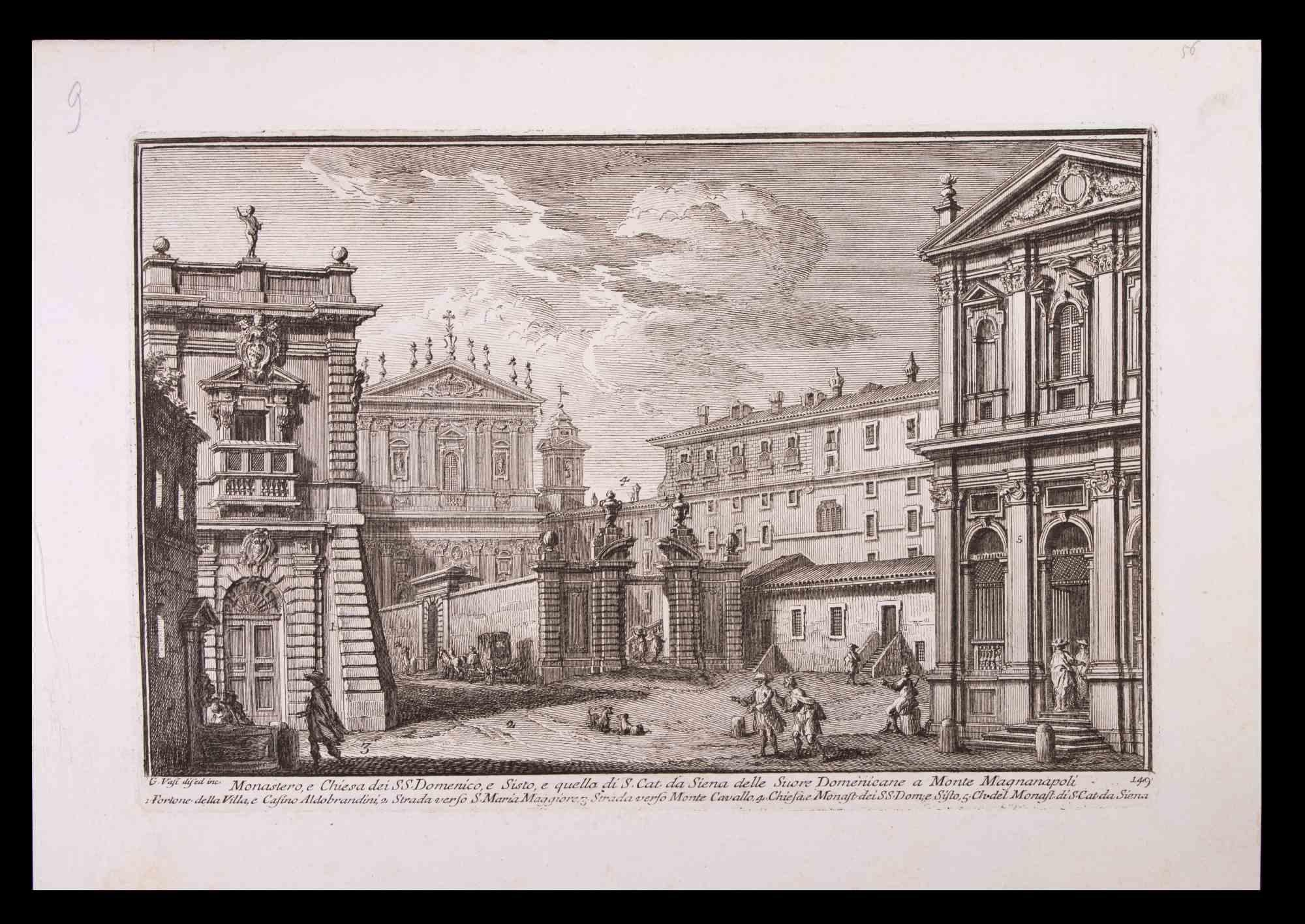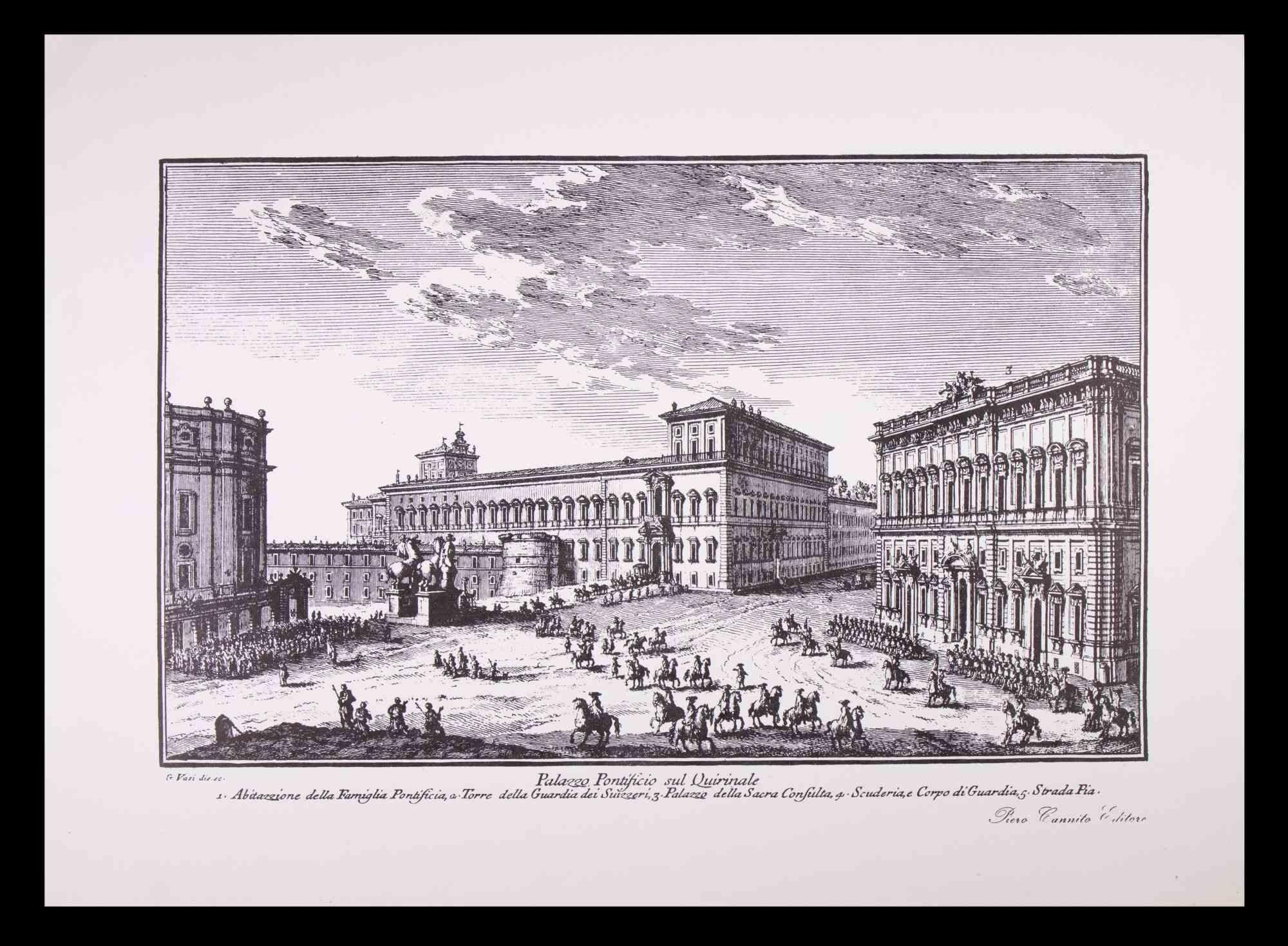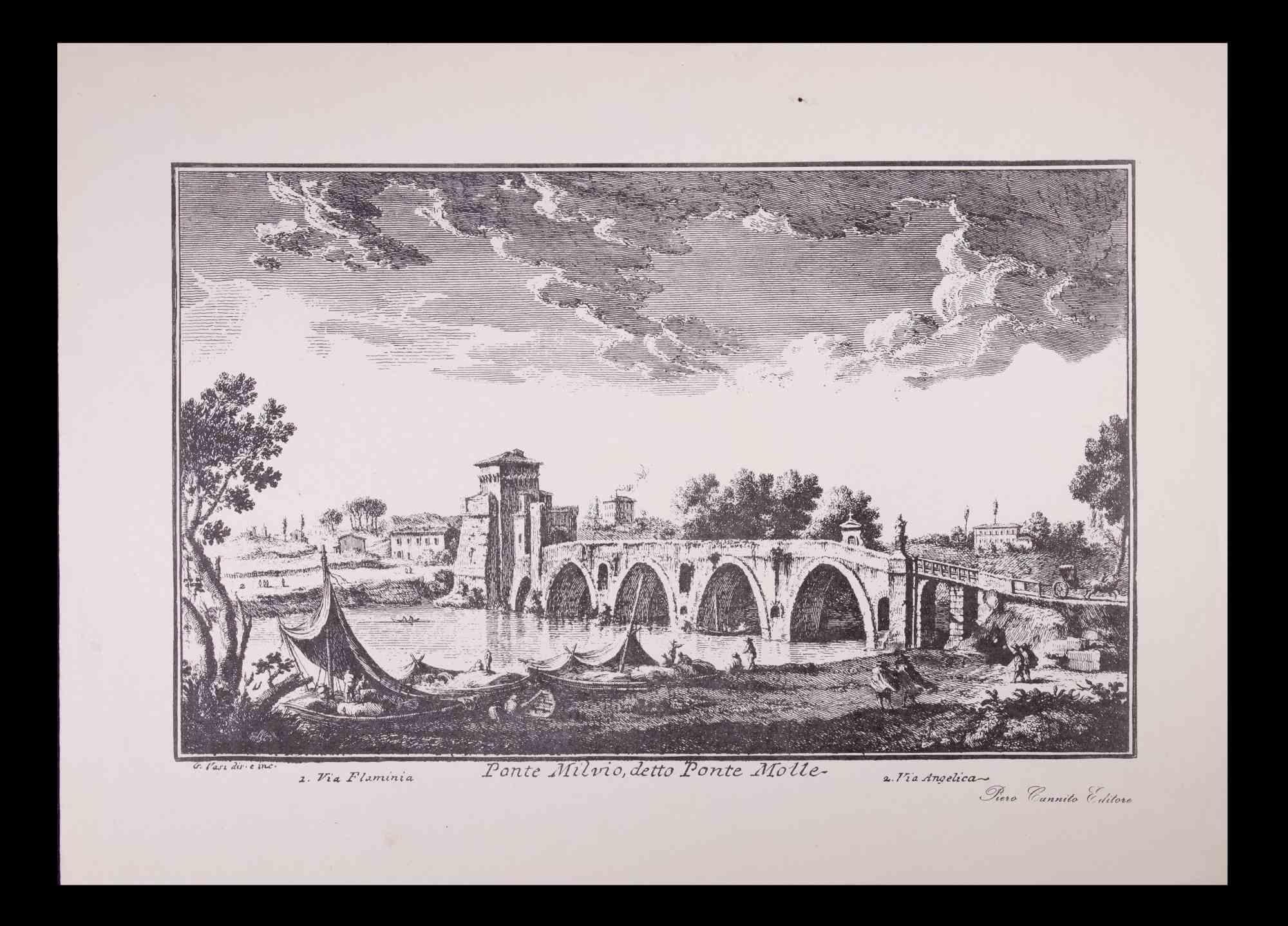Items Similar to La Sablière - Etching after C. Corot by G.M. Greux - 19th Century
Want more images or videos?
Request additional images or videos from the seller
1 of 3
Camille Corot & GreuxLa Sablière - Etching after C. Corot by G.M. Greux - 19th CenturyLate 19th Century
Late 19th Century
About the Item
La Sablière is a drawing in etching technique on paper glued on ivory-colored cardboard, realized after Jean-Baptiste Camille Corot (1796-1875) and Gustave-Marie Greux, a sculptor and engrave of the second half of 19th Century.
La Sablière, as it is reported on the lower center margin, this is an original drawing representing a landscape. On the bottom left painter's signature, and on the bottom right sculptor's signature.
In excellent conditions: as good as new.
On the Back of the artwork, news about the painter and the engraver of the print.
Jean-Baptiste Camille Corot (1796-1875): Camille Corot was a French painter, considered one of the most sensitive landscape painters of the nineteenth century.
- Creator:Camille Corot & Greux
- Creation Year:Late 19th Century
- Dimensions:Height: 5.91 in (15 cm)Width: 7.49 in (19 cm)Depth: 0.04 in (1 mm)
- Medium:
- Movement & Style:
- Period:
- Framing:Framing Options Available
- Condition:Insurance may be requested by customers as additional service, contact us for more information.
- Gallery Location:Roma, IT
- Reference Number:
About the Seller
4.9
Platinum Seller
These expertly vetted sellers are 1stDibs' most experienced sellers and are rated highest by our customers.
1stDibs seller since 2017
6,687 sales on 1stDibs
Typical response time: 2 hours
- ShippingRetrieving quote...Ships From: Principauté de Monaco, Monaco
- Return PolicyA return for this item may be initiated within 14 days of delivery.
More From This SellerView All
- Chiesa di S. Marcello - Etching by Giuseppe Vasi - Late 18th CenturyBy Giuseppe VasiLocated in Roma, ITChiesa di S. Marcello is a black and white etching of the Late 18th century realized by Giuseppe Vasi. Signed and titled on plate lower margin. Good conditions and aged margins wi...Category
Late 18th Century Old Masters Figurative Prints
MaterialsEtching
- Monastero e Chiesa dei SS. Domenico - Etching by G. Vasi - Late 18th CenturyBy Giuseppe VasiLocated in Roma, ITMonastero e Chiesa dei SS. Domenico is an original black and white etching of the Late 18th century realized by Giuseppe Vasi. The beautiful etching represents a glimpse of Rome. ...Category
Late 18th Century Old Masters Figurative Prints
MaterialsEtching
- Palazzo Pontificio - Etching by Giuseppe Vasi - Late 18th CenturyBy Giuseppe VasiLocated in Roma, ITPalazzo Pontificio is an original black and white etching of the Late 18th Century realized by Giuseppe Vasi. The beautiful etching represents a glimpse of Rome. Signed and titled ...Category
Late 18th Century Old Masters Figurative Prints
MaterialsEtching
- Ponte Milvio - Etching by Giuseppe Vasi - Late 18th CenturyBy Giuseppe VasiLocated in Roma, ITPonte Milvio is an original black and white etching of the Late 18th century realized by Giuseppe Vasi. The beautiful etching represents a glimpse of Rom...Category
Late 18th Century Old Masters Figurative Prints
MaterialsEtching
- Sedale e Chiesa di S. Spirito - Etching by Giuseppe Vasi - Late 18th CenturyBy Giuseppe VasiLocated in Roma, ITSedale e Chiesa di S. Spirito is an original black and white etching of the Late 18th century realized by Giuseppe Vasi. The beautiful etching represents a glimpse of Rome. Signed...Category
Late 18th Century Old Masters Figurative Prints
MaterialsEtching
- Chiesa di S. Venanzio - Etching by Giuseppe Vasi - Late 18th CenturyBy Giuseppe VasiLocated in Roma, ITChiesa di S. Venanzio is an original black and white etching of the Late 18th century realized by Giuseppe Vasi. The beautiful etching represents a glimpse of Rome. Signed and tit...Category
Late 18th Century Old Masters Figurative Prints
MaterialsEtching
You May Also Like
- Piranesi 18th C. Etching "Reliquiae Theartri Pompejani" an Ancient Roman TheaterBy Giovanni Battista PiranesiLocated in Alamo, CAThis a framed Giovanni Battista Piranesi (1720-1778) etching entitled "Reliquiae Theartri Pompejani" (Remains of the Theatre of Pompey) from "Il Campo Marzio dell'Antica Roma" (The C...Category
Mid-18th Century Old Masters Landscape Prints
MaterialsEtching
- Daniel Marot's The Siege of the Dutch Fortified City of Ypres by Louis XIVBy Daniel MarotLocated in Alamo, CA"Ypres, Grand Ville Riche & Marchande" is an engraving and etching by Daniel Marot (le Vieux) (1661–1752). It depicts a view of the siege of the city of Ypres and its citadel on the left in the Spanish Netherlands by Louis XIV's troops. This battle took place between March 18 and March 25, 1678, as part of the Franco-Dutch War. Marot illustrated in great detail (best appreciated with magnification) the French attack on the strong pentagonal citadel on the extreme left, which had been built recently in anticipation of a French attack. The trenches built by the French approaching the town are seen on the right. King Louis XIV can be seen in the foreground surveying the battle mounted on his white horse, surrounded by his officers and troops. The print is presented in an attractive ornate black wood frame with a cream-colored double mat with a black inner trim. It is glazed with plexiglas. The frame measures 25.38" x 22.63" x .88". The engraving, frame, mat and glazing are in excellent condition. Artist: Daniel Marot (1661–1752) was also called "Le Vieux". He was the son of the famous architect, Jean Marot. Marot had diverse interests and talents. In addition to his art, he designed garden projects, architectural ornaments, furniture, and even upholstery. Marot as a Huguenot protestant was forced to leave France in 1685 following the revocation of the Edict of Nantes. He emigrated to Holland, where he worked for William of Orange (an arch enemy of his former employer Louis XIV). Marot was largely responsible for the interiors of Williams palace at the Loo. In 1694 he went Britain as William had married Queen Mary and he had become King William III of England. He later returned to Holland in about 1698 and died in the Hague in 1752. He left a lasting legacy on the decorative arts in the Netherlands, where his grand version of the Louis XIV style remained popular into the 1730s. Historical Background: In October 1677, Mary Stuart, niece and possible successor of Charles II of England, married Louis XIV's arch enemy William III of Orange...Category
Late 17th Century Old Masters Landscape Prints
MaterialsEngraving, Etching
- Ruins of the Roman Baths of Belisarius: A 19th C. Etching by Luigi RossiniBy Luigi RossiniLocated in Alamo, CAThis early 19th century etching entitled "Veduta degl' Avanzi delle Torri di Belisario Dalla parte che guarda l' Interno della Città, vicino a Porta S. Giovanni, A. Mura Aureliane" (...Category
1820s Old Masters Landscape Prints
MaterialsEtching
- Breaking up of the Agamemnon, No 1By Sir Francis Seymour Haden, R.A.Located in Storrs, CTEtching and drypoint. Schneiderman 133.v/xi. 7 3/4 x 16 3/8 (sheet 9 1/4 x 17 1/2). A rich impression with plate tone printed in black/brown in on antique cream wove paper. Signed in...Category
Mid-19th Century Old Masters Landscape Prints
MaterialsDrypoint, Etching
- Fabricius (Ponte Cestio) Bridge : Framed 18th C. Piranesi Architectural EtchingBy Giovanni Battista PiranesiLocated in Alamo, CAThis framed 18th century etching by Giovanni Battista Piranesi is entitled "Dimostransi nella Tav. presente la Pianta, ed Elevazione del Ponte, oggi detto Quattro Capi egli è antichissimo, e chiamavasi Fabrizio da L. Fabrizio Presid. delle Strade, che lo fabbrico' nel fine della Repubblica. "(The Plan and Elevation of the Bridge, today called Quattro Capi. The architect is very ancient, and was called Fabrizio da L. Fabrizio Presid. delle Strade, who built it at the end of the Republic). This is plate 18 in volume 4 of Piranesi's "Le antichita romane opera di Giambatista Piranesi architetto veneziano" (Roman antiquities by Giambatista Piranesi Venetian architect). It was published in Rome in 1756-1757. This etching depicts the plan and elevation of the bridge now called the Ponte dei Quattoro Capi or Ponte Cestio (Bridge of the Four Heads), which in antiquity was called the Bridge of Fabricius after L. Fabricius, the Superintendant of the Streets who built it at the end of the Republic, around 62 BC. It was also been known in the Middle Ages as ‘Ponte Giudeo’ (Bridge of the Jews). The bridge crossed from the left bank or northeast side of the Tiber River to Tiber Island...Category
1750s Old Masters Landscape Prints
MaterialsEtching
- Landslide (Bergsturz)By Max KlingerLocated in Long Island City, NYMax Klinger's Intermezzi (Intermezzos) offers a diverse selection of amusements, like brief comedic interludes at the opera. The portfolio highlights the capriciousness of life and i...Category
1880s Old Masters Landscape Prints
MaterialsEtching
Recently Viewed
View AllMore Ways To Browse
Corot Jean
Antique News Paper
Jean Baptiste Camille Corot
Tarkay Giclee
George Elbert Burr Etchings
Earl Of Sandwich
Christian Riese Lassen
Dali Alps
Dali Tienta
Delta Airlines Posters
Christo Wrapped Statues
Cambridgeshire Antique Map
Le Remorqueur
Radcliffe Camera
Michael Dal Cerro
Nell Revel
Nell Revel Smith
Tiffany Red Glass Heart
